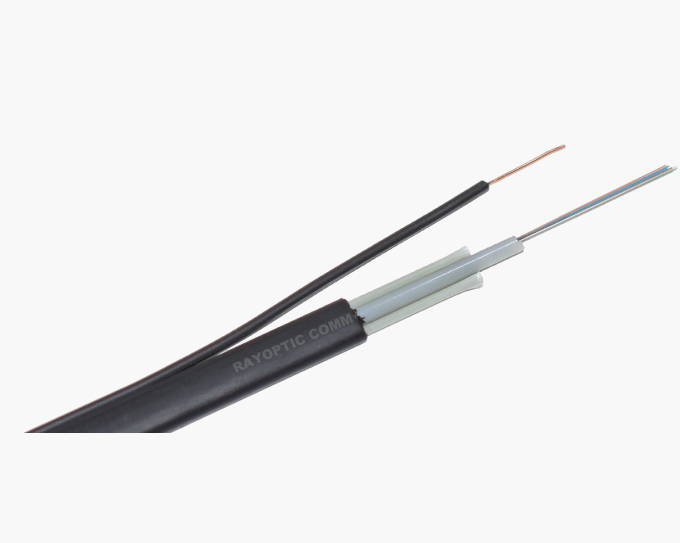Fiber optic cable is a high-speed transmission medium that uses light pulses to transform data over long distances. It comprises thin strands of optically pure glass or plastic fibers, which act as waveguides to carry light signals.
The basic principle behind fiber optic communication is total internal reflection. When light enters the fiber at a specific angle, it undergoes repeated reflections within the fiber’s core, effectively bouncing off the walls of the fiber. This ensures that the light remains trapped within the fiber and can travel long distances without significantly losing signal strength.
Composition of fiber optics cable assemblies
Fiber optic cable assemblies are typically made of several key components that enable the transmission of light signals over long distances. Here are the main elements typically found in fiber optic cable assemblies:

Fiber Optic Core
The central part of the fiber optic cable is the core through which light travels. It is usually made of high-quality, ultra-pure glass or plastic material known as optical fiber. The core is designed to minimize signal loss and maintain the integrity of the transmitted light.
The size and design of the core directly influence the amount of light that can be transmitted through the fiber optic cable. Smaller cores enable more modes (multiple paths of light propagation), allowing for a larger signal-carrying capacity.
Single-mode fibers have a small core size, typically around 9 µm, and can transmit a single light mode, enabling long-distance communication with minimal signal degradation.
Cladding
The cladding is not only coating but helps to keep the light within the core by reflecting it into the core through total internal reflection. This ensures the light signal can propagate through the fiber with minimal loss.
Buffer Coating
A buffer coating further protects the fiber optic core and cladding. The buffer coating is typically made of a polymer material such as acrylate or silicone, which provides mechanical strength, protects against moisture, and reduces the risk of damage to the core.
The buffer coating can have different colors or markings in fiber optic cable assemblies with multiple fibers. This color coding or labeling helps identify and distinguish individual fibers within a cable, making it easier to manage, troubleshoot, and maintain the fiber optic network.
Strength Members
Fiber optic cable assemblies often have strength members that give extra protection and support to the delicate optical fibers. These strength members are typically made of materials like aramid yarn (e.g., Kevlar) or fiberglass, which help to prevent the cable from stretching or breaking under tension.
Jacket
The entire assembly is covered by an outer jacket, which provides overall protection and insulation. The jacket is commonly made of materials such as PVC (polyvinyl chloride), LSZH (low smoke zero halogens), or PE (polyethylene).
Contact RAYOPTIC COMM to order Fiber Optic Cable
It’s worth noting that fiber optic cable assemblies can vary in design and construction depending on the specific application or industry requirements. Different types of fiber optic cables, such as single-mode or multimode fibers, may vary their core and cladding dimensions. You can order quality Fiber Optic Cable collection from us by discussing it with our support team.

